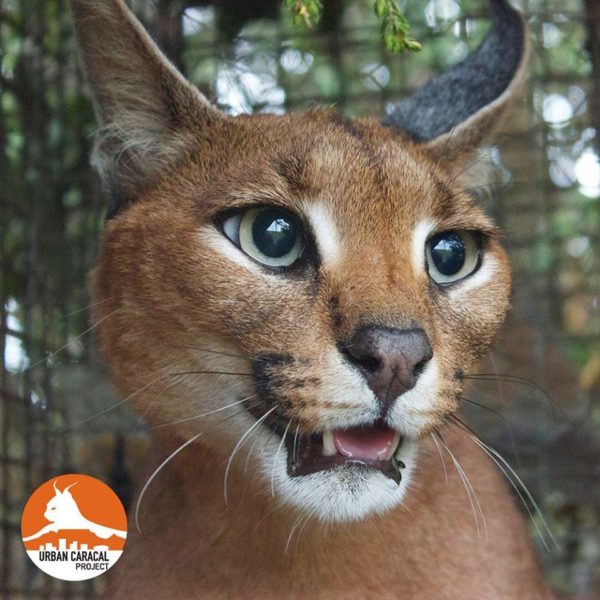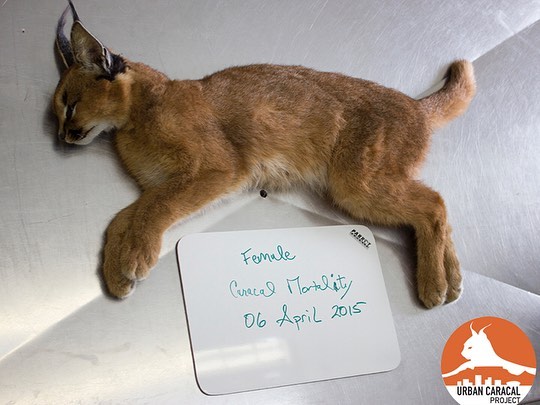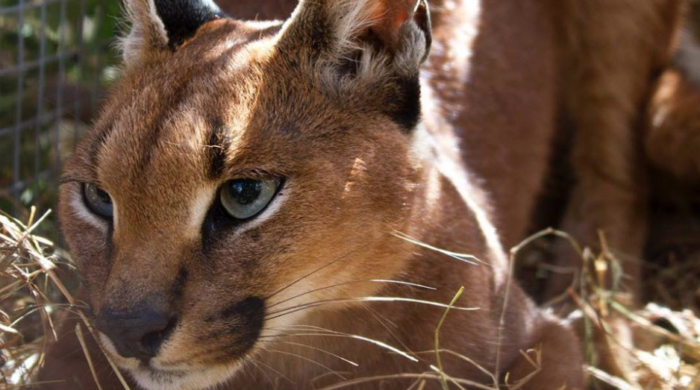Data from the Urban Caracal Project suggests that the sprawling urbanisation of the Mother City could lead to the extinction of Cape Peninsula caracals.
Members from the organisation conducted a GPS-collar locations mapping project to better understand the placement of the Cape caracal populations. Their data suggests that some populations are being isolated from those outside of Cape Town which forces them to inbreed to reproduce.
It is estimated that there are only around 50 caracals left in the Cape Town catchment area and the project’s research shows that some are already inbreeding at a level of brother-sister mating.

The Urban Caracal Project fears this isolation may drive the population to extinction. To avoid this, they are looking into funding a robust genetic study to sequence a caracal genome to provide a basis for the genetic rescue of the population.
“At this point, we are uncertain the gravity of the situation, but it is possible that they could become more susceptible to diseases that could kill them, or reduced health that would decrease their chances of survival. But again, this is really hard to assess in the wild and we need funding to generate more data that helps illuminate the threat to the caracals,” says Project Coordinator Dr Laurel Serieys.
Along with these dangers, Cape caracals also face being run over on busy roads and poisoned by rodents who have been fed rat poison.
The project has actively captured, ear-tagged, and radio-collared caracals between November 2014 to early 2017. The collars placed on the animals were all scheduled to remotely fall off of the caracals within a 6 month period avoiding the stress of recapturing to remove the collar.
“We opportunistically ear-tag caracals if one is rescued by the SPCA, for example, and right now there’s one that’s been seen a lot around Tafelberg road. Otherwise, since they are not collared, we are unsure how many other tagged cats are out there still. We firmly believe that allocating our resources away from GPS-collaring (each one is R50,000) to doing assessments like the genetic investigations are more critical to promoting the conservation of the caracals in the Cape Peninsula. Due to limited funding, we are working to try fund our genetic work rather than purchase more GPS-collars so that we can take a holistic approach to conserving this population,” says Serieys.

What is the solution?
“The first step to finding a solution is to determine the gravity of inbreeding in the population, and projected extinction time based on the level of inbreeding present in the population today. While we have preliminary evidence that there is an inbreeding problem, and the caracal GPS collar data support that inbreeding WOULD be a problem since the population is spatially isolated from other caracal populations, we must collect additional information,” says Serieys.
1) northern and eastern suburbs (whats called the Greater Cape Town area),
2) Central Karoo, and
3) Namaqualand.
1) how long it would take for the Cape Peninsula caracal population to go extinct without intervention, and
2) test with computer simulations how successful interventions would be if caracals from other populations are introduced so that the most ideal population could provide new genes to the Cape Peninsula caracal population.
How can locals help?
The project absolutely and desperately needs funding to complete objectives 1-2 (ie., perform more extensive genetic analyses, so cover the cost of laboratory expenses). People can donate to our non-profit host Institution (iCWild)- any amount helps and tax certificates are available. They are also open to public lectures that will facilitate funding (contact [email protected] for more information). Another project to raise funds, called Fire Lily (a dessert straw wine produced by Botanica Vineyards) directly supports the project as well.
Residents can find more information on how to get involved or donate here.
Pictures: The Urban Caracal Project

